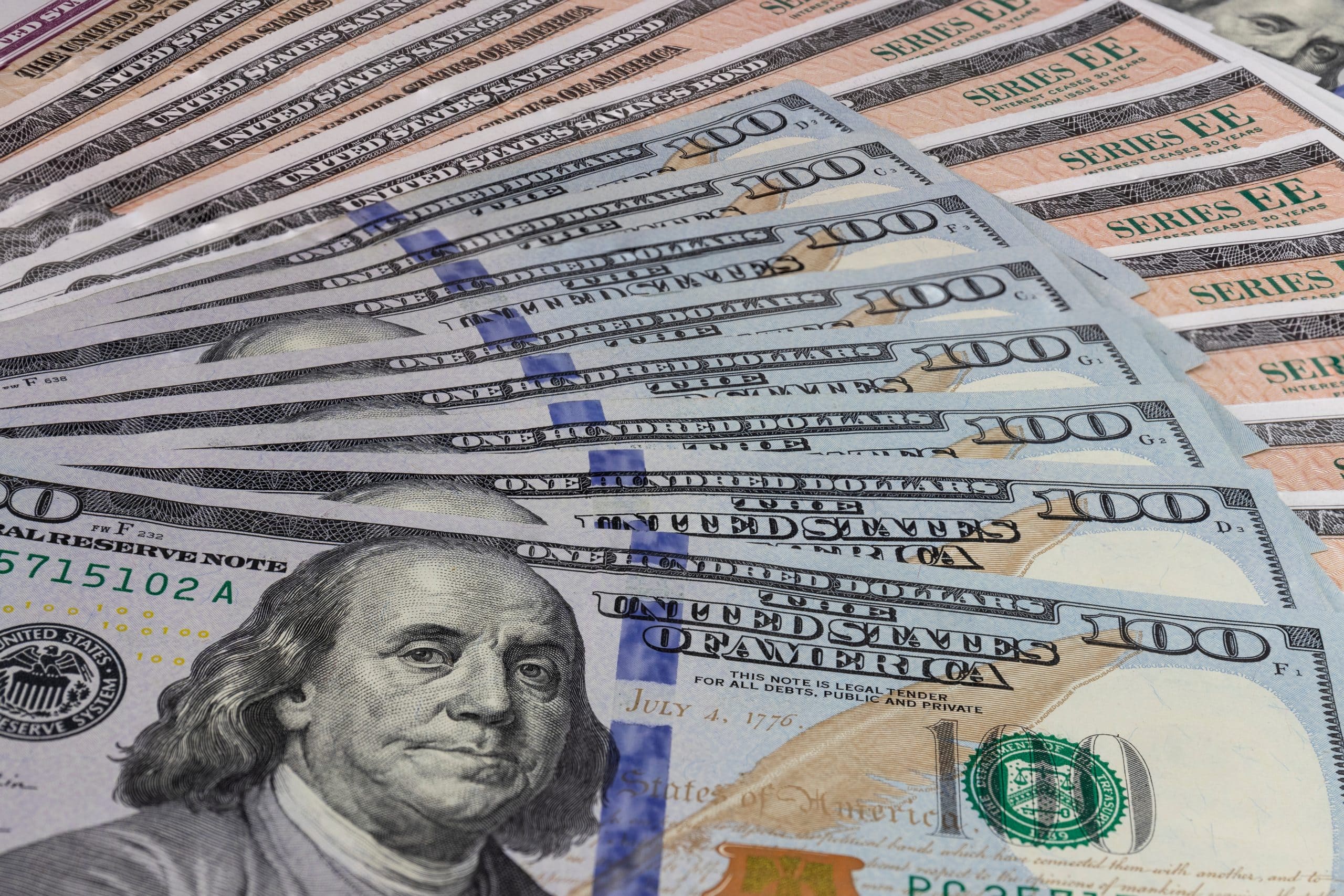The Impact of Hot Wholesale Inflation Data on Currency Valuation: Understanding Why the Dollar Steadies
The recent surge in wholesale inflation data has sent ripples through the financial markets, particularly impacting the value of the US dollar. As investors analyze this data, many are reassessing their outlook on interest rates and the potential for future rate cuts. Understanding why the dollar steadies amidst this hot inflation data is crucial for anyone looking to navigate the currency markets effectively.
When wholesale prices rise faster than expected, it can indicate that inflationary pressure is building within the economy. This scenario typically leads many investors to predict that the Federal Reserve might delay or even reconsider any planned interest rate cuts. While lower interest rates usually weaken a currency, high wholesale inflation data creates an atmosphere of uncertainty that can stabilize the dollar.
Key factors influencing this relationship include:
- Investor sentiment: High inflation data creates an environment of cautious optimism. While there may be talks of lower interest rates in the future, current data often leads to a steadying of the dollar. Investors are likely to hold onto it as a safe-haven asset, considering other currencies may face more volatility.
- Interest rate expectations: The anticipated rate cuts can often be tempered by hot inflation data. Investors closely monitor the Federal Reserve’s messaging, and if they perceive a strong stance against inflation, the dollar’s position can strengthen as confidence in the U.S. economy is reaffirmed.
- Comparative analysis: When wholesale inflation rises in the U.S., comparisons with other economies come into play. If inflation in the Eurozone or Asia is also climbing, the relative strength of the dollar may remain steady as it is seen as a more stable investment compared to other currencies.
Moreover, the relationship between inflation and the dollar also ties into broader economic metrics. For example, strong growth in other key areas such as employment or consumer spending may reinforce the dollar’s position, even amidst rising prices. Conversely, prolonged inflation without corresponding growth can lead to instability and uncertainty.
High wholesale inflation figures can also increase the volatility of other currency pairs, making the dollar an attractive hold amid uncertainty. Traders on forex markets notice the impact of inflation data quickly, and many flock to the dollar as a safeguard during turbulent times.
Another important element to consider is how consumer price indexes react to wholesale costs. While wholesale inflation can suggest rising costs for businesses, it eventually trickles down to the consumer. If consumers expect prices to rise, their spending patterns might shift, further influencing the dollar’s valuation depending on consumer confidence levels.
In a turbulent economy, external factors like geopolitical tensions can also affect how currency values fluctuate. For instance, if indicators suggest potential trade wars or tariffs, the strength of the dollar could also be influenced by these perceptions.
Ultimately, as the financial landscape continues to evolve, keeping an eye on wholesale inflation trends and the Federal Reserve’s monetary policy is critical. Recognizing these variables allows for better decision-making in times of economic shift.
Rate Cut Fervour: Analyzing Market Reactions to Inflation and Interest Rate Decisions
The recent fluctuations in the financial markets have been heavily influenced by the latest data on wholesale inflation. Investors are shifting their focus, particularly regarding the prospects of interest rate cuts. As inflation numbers pour in hotter than expected, the dollar is stabilizing, creating a complex scenario for market reactions.
Wholesale inflation serves as an early signal of consumer price trends. When inflation rates rise unexpectedly, it sends a message through the economic landscape. The anticipation of rising costs can lead to speculations about interest rate decisions by the Federal Reserve.
Recent readings show that wholesale prices increased significantly. This increase tempers the fervour for swift rate cuts, which had been a dominant theme among investors. The dollar has steadily held its ground, becoming a preferred choice for those seeking stability in uncertain times.
Factors shaping market reactions include:
- Inflation rate trends: A sudden spike in inflation can catch investors off guard. Frequent adjustments to expectations can lead to volatility in both fixed-income and equity markets.
- Interest rate speculation: Markets typically react positively to signs of potential rate cuts, but higher-than-expected inflation signals may deter central bank action, preventing cuts from materializing.
- Investor sentiment: The mood among investors dramatically shifts with new inflation data. Optimism can swiftly turn into caution if inflation numbers indicate a stronger economy than anticipated.
- Sector reactions: Different sectors respond differently to interest rate changes. For example, utility stocks may suffer when rates rise, while financials often benefit from higher rates.
As the dollar steadies, this creates a multifaceted environment in which not just inflation, but global economic factors, play a role. Traders and investors resort to reassessing their portfolios, weighing the merits of holding onto cash versus investing in assets that might thrive in a high-interest-rate environment.
It is also essential to note that the global landscape impacts domestic inflation perceptions. Rising prices globally can spill over into the U.S. market, prompting reactions from investors. Major corporations are also paying close attention to wholesale price trends, as continued inflationary pressure could lead to higher consumer prices and potential slowdowns in spending.
The Federal Reserve’s response to inflation and market dynamics is always under scrutiny. If officials express concern about inflationary pressures, markets may temper their expectations for rate cuts, reflecting a cautious approach to future economic strengths.
Conclusion
The recent hot wholesale inflation data has had a profound effect on the valuation of the dollar, exhibiting a steady performance in the face of fluctuating market conditions. This stability suggests that investors are adapting to the realities of the current economic landscape, recognizing that inflation levels can significantly influence the Federal Reserve’s decisions on interest rates.
While rate cuts are often viewed as a potential response to stimulate growth, the current data indicates a need for a more measured approach. The intricate balance between inflation data and interest rate decisions underscores the complexities of the financial markets.
For investors and consumers alike, staying informed about these dynamics will be crucial. Adapting to these shifts will ultimately prepare you for the challenges and opportunities that lie ahead in this ever-evolving economic landscape.
Comparison, examination, and analysis between investment houses
Leave your details, and an expert from our team will get back to you as soon as possible
* This article, in whole or in part, does not contain any promise of investment returns, nor does it constitute professional advice to make investments in any particular field.
To read more about the full disclaimer, click here- Articles
- •
- 9 Min Read
- •
- ago 5 minutes
 ACCENTURE TO BUY AUSTRALIAN FIRM CYBERCX IN ITS LARGEST-EVER CYBER DEAL
ACCENTURE TO BUY AUSTRALIAN FIRM CYBERCX IN ITS LARGEST-EVER CYBER DEAL
Accenture to Acquire Australian Firm CyberCX in Its Largest-Ever Cybersecurity Deal OverviewAccenture has announced its decision to acquire Australian cybersecurity
- ago 5 minutes
- •
- 9 Min Read
Accenture to Acquire Australian Firm CyberCX in Its Largest-Ever Cybersecurity Deal OverviewAccenture has announced its decision to acquire Australian cybersecurity
- Lior mor
- •
- 17 Min Read
- •
- ago 2 hours
 China’s Property Investment Falls 12% Y/Y in January–July
China’s Property Investment Falls 12% Y/Y in January–July
The Impact of China’s 12% Year-over-Year Decline in Property Investment from January to July The recent report indicating a 12%
- ago 2 hours
- •
- 17 Min Read
The Impact of China’s 12% Year-over-Year Decline in Property Investment from January to July The recent report indicating a 12%
- orshu
- •
- 7 Min Read
- •
- ago 2 hours
 Global Markets Wrap: Thursday, August 14, 2025 Performance and Outlook for Friday, August 15
Global Markets Wrap: Thursday, August 14, 2025 Performance and Outlook for Friday, August 15
Mixed Global Trading on August 14 as European and Asian Stocks Gain While U.S. Markets Remain Cautious Global financial markets
- ago 2 hours
- •
- 7 Min Read
Mixed Global Trading on August 14 as European and Asian Stocks Gain While U.S. Markets Remain Cautious Global financial markets
- Ronny Mor
- •
- 15 Min Read
- •
- ago 3 hours
 Goldman Sachs Says the Risk of Stock-Market Decline Has Suddenly Spiked
Goldman Sachs Says the Risk of Stock-Market Decline Has Suddenly Spiked
Implications of Goldman Sachs’ Warning: Sudden Spike in Stock-Market Decline Risk The recent warning from Goldman Sachs about a sudden
- ago 3 hours
- •
- 15 Min Read
Implications of Goldman Sachs’ Warning: Sudden Spike in Stock-Market Decline Risk The recent warning from Goldman Sachs about a sudden












